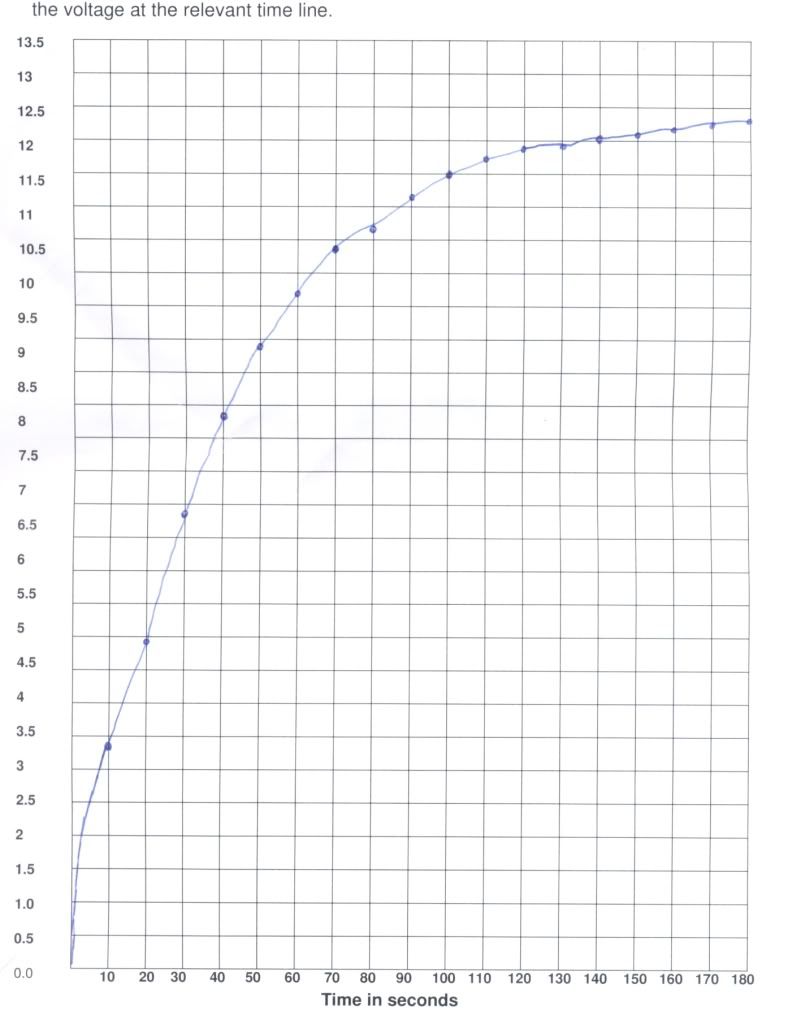This lesson we learnt about resistors - capcitor circuits and what capcitor's do.
Calculate how fast the capacitor should charge:
The formula for this is:
Resistance X Capacitance X 5 = Time required to charge.
We also had to convert from μF to F.
Capacitance Capacitance ( F ) X Resistance X 5 Calculated Time
10 0.00001 X 1,000 X 5 = 0.05sec
1 0.000001 X 250,000 X 5 = 1.25sec
100 0.0001 X 10,000 X 5 = 5sec
300 0.0003 X 4,500 X 5 = 6.75sec
Evaluate the charge time:
Next we had to look at the charge time and determine whether there was enough time to take the readings for each different capacitor before the charge time was up.
Capacitance:
10μF No
1μF No
100μF No
300F Yes
Calculate resistor size:
Capacitance Capacitance
(μF) (F)
1 - 220 0.00022 X 5 = 0.001
2 - 330 0.00033 X 5 = 000165
3 - 100 0.001 X 5 = 0.0005
4 - 47 0.000047 X 5 = 0.000235
After we had done all this, then we had to divide 180 (seconds) by the answer above to calculate what size resistor will be needed to have the capacitor charge in about 3 minutes.
1. 180 ÷ 0.0011 = 1636kΩ
2. 180 ÷ 0.00165 = 109kΩ
3. 180 ÷0.0005 = 360kΩ
4. 180 ÷ 0.000235 = 756kΩ
After we had completed these tasks, we then had to build a circuit and then monitor the capacitor charging time verse voltage. Once the circuit was built, we removed the bridge wire and recorded the voltage every 10 seconds for 180 seconds.
10: 3.42v
20: 4.99v
30: 6.83v
40: 8.23v
50: 9.18v
60: 9.93v
70: 10.55v
80: 10.96v
90: 11.28v
100: 11.51v
110: 11.69v
120: 11.83v
130: 11.95v
140: 12.03v
150: 12.09v
160: 12.13v
170: 12.18v
180: 12.21v
After this was completed, we then plotted the data into a graph
Capacitor Charging Report:
The findings in the above graph, show that as the capacitor starts to charge up the speed is fast, however as the volts increase in size, the speed slows down to a steady pace, so as not to overcharge the capacitor.

No comments:
Post a Comment